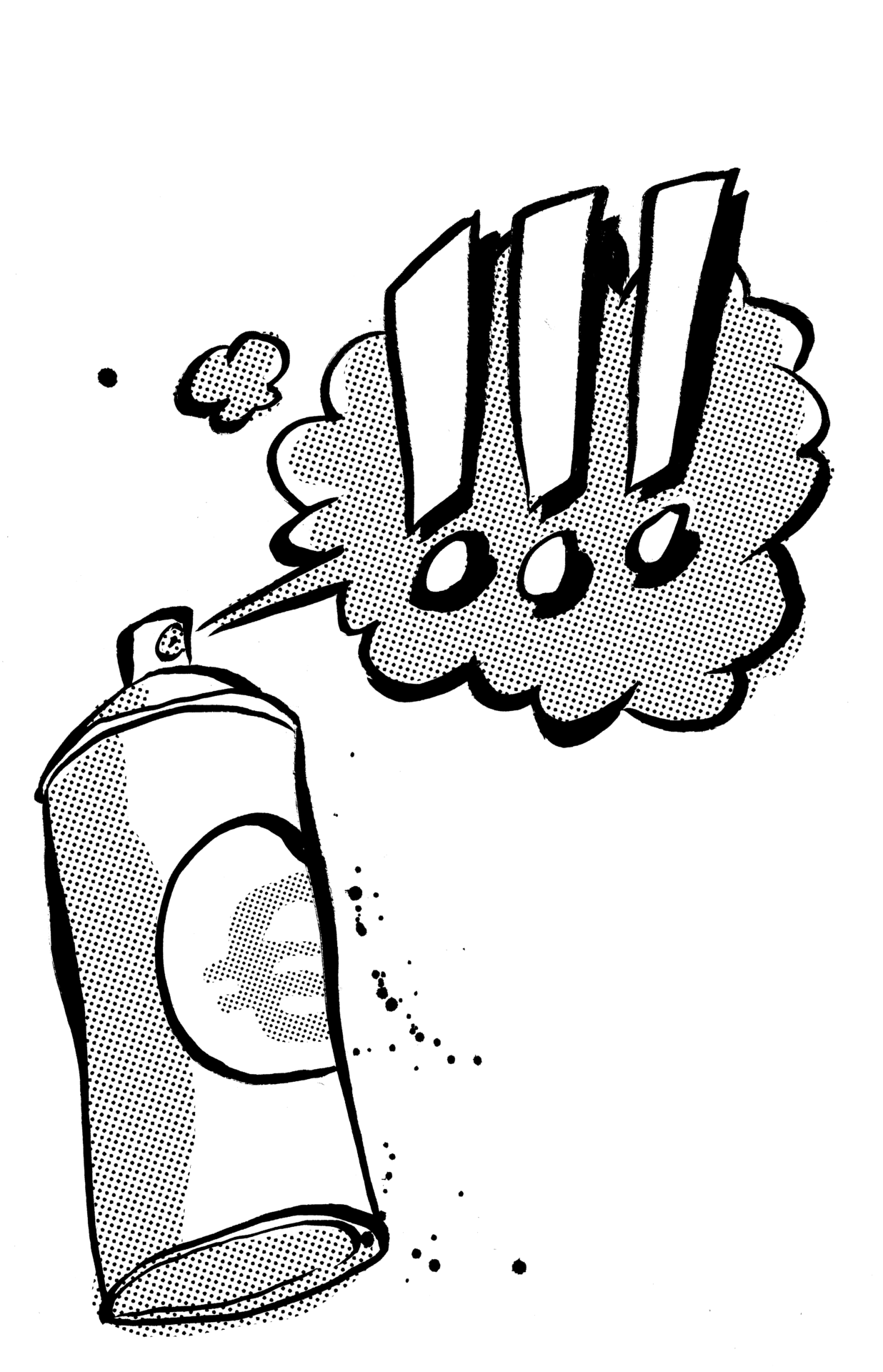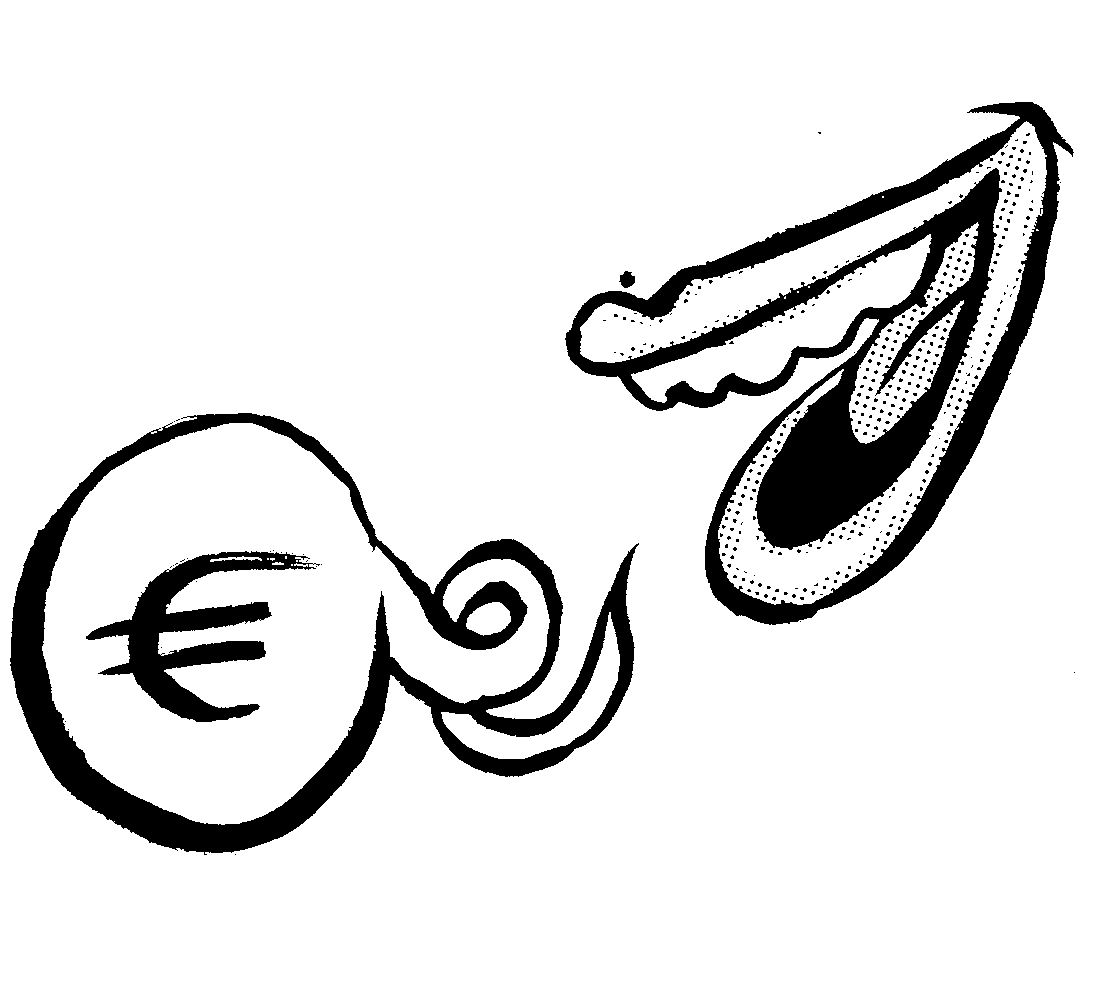Art creators

Taiteilijana sinulla on oikeus elää työlläsi.
Taiteilijaa kysytään työhön, koska taiteella nähdään arvoa. Työstä kuuluu aina maksaa rahallinen korvaus. Näkyvyys, jalka oven välissä tai pullakahvit eivät korvaa työtuntejasi ja ainutlaatuista osaamistasi.
Uskalla neuvotella ja hinnoitella työsi realistisesti. Näkyvyys ei johda palkallisiin työtilaisuuksiin edes meritoituneimmilla taiteilijoilla niin kauan kuin taidekentällä ylläpidetään palkattoman työn käytäntöjä. Palkkion vaatiminen on reilua muita taiteilijoita kohtaan ja parantaa koko alan toimintaedellytyksiä.
Luovaa työtä ei voi tehdä 365 päivää vuodessa, mutta toimeentulon on riitettävä koko vuodeksi. Hinnoittele työsi siis suhteessa todelliseen työmäärään ja työpäiviin vuodessa.
Näin edistät reiluja käytäntöjä taiteilijana:
- Kysy palkkiosta tai tee tarjous tilaajalle heti kättelyssä.
- Määrittele kirjallisessa sopimuksessa vastuut ja rahalliset korvaukset, kuten palkkio, matka- ja majoituskulut sekä syntyvien kustannusten korvaaminen.
- Mikäli kyseessä on verokortilla maksettava toimeksianto, ota selvää, onko kyseessä palkka vai työkorvaus. Jos tilaaja maksaa työkorvausta, sinun tulee huolehtia itse eläkemaksuista ja vakuutuksista.
- Jos laskutat, laske summaan mukaan materiaalit, juoksevat kulut, palkan sivukulut, kuten eläkevakuutusmaksu, loma- ja mahdollisten sairauspäivien osuus sekä arvonlisävero.
Hinnoittelu ja palkkiosuositukset
Taiteilijan työtä helpottamaan on tälle sivulle koottu linkkejä eri taiteen alojen palkka- ja palkkiosuosituksiin sekä sopimuspohjiin.
Suositukset ovat aina pohjahintoja ja ohjeellisia. Hintaan vaikuttaa valmistelevan työn määrä, esityksen kesto, vaadittava tarpeisto, tekijöiden määrä, sijainti, yleisömäärä, erityisvaatimukset, taiteilijan työuran pituus ja ansioituneisuus.

- Visuaaliset taiteet
- Kirjallisuus
- Esittävät taiteet
- Tekijänoikeusasiat
- Taiteilijan työ
osana sosiaali- ja terveydenhuoltoa - Taiteilija
puhumaan työstään, keskustelemaan tai luennoimaan
Visuaaliset taiteet
kuvataide / kuvitus / sarjakuva / muotoilu / julkinen taide
Tilaustyöt:
Kun sinulta tilataan teos, tee sopimus jo luonnosvaiheesta ja sovi luonnospalkkiosta. Luonnoksen tekeminen on osaamista ja aikaa vievää työtä. Kun luonnos on hyväksytty, tehdään sopimus sen perusteella itse teoksesta. Määrittele aikataulu, vastuut, palkkion osuus ja materiaali yms. kustannukset.
Hinnoittele realistisesti. Jos prosessi on pitkä, saattavat myös materiaalien hinnat nousta. Laske hintaan juoksevat kulusi (vuokra, sähkö), laite- ja materiaalikulut, eläkevakuutus ja arvonlisävero. Sovi tarkasti perustamis-, kuljetus- ja pystytyskuluista. Palkkiollasi sinun tulee pystyä kattamaan myös vapaapäivät ja vuosilomat.
Tilaustöiden tekeminen saattaa edellyttää sinulta mahdollisuutta laskuttaa. Tämä tarkoittaa omaa y-tunnusta toiminimiyrittäjänä, muuta yritysmuotoa tai esimerkiksi osuuskuntaan kuulumista. Yritysmuoto kannattaa valita huolella sen mukaan, kuinka muutoin toimeentulosi olet järjestänyt.
Lue lisätietoa palkan ja palkkion erosta ja testaa freelancertyön palkkiolaskuria.
Teoksen myyminen:
Teosmyynti on veronalaista ansiotuloa. Arvonlisävero tulee huomioida hinnoissa. Arvonlisäverottoman toiminnan raja on 1.1.2021- alkaen 15 000 euroa. Saatat tulla arvonlisäverovelvolliseksi kesken kauden, kun myyntisi ylittää arvonlisäverottoman toiminnan rajan. Lisätietoa: lue kuvataiteilijan arvonlisävero ohje.
Jos myyt teoksen gallerian, taidelainaamon tai muun välittäjän kautta laske toimijan määrittelemä provisio mukaan hintaan.
Taiteilijalle kuuluu myös tekijänoikeudellinen jälleenmyyntikorvaus (joka ei koske teoksen ensiostoa). Lisää jälleenmyyntikorvauksesta Kuvaston sivuilta.
Kuvitustöiden käyttöoikeudet/korvaus:
Sovi tarkkaan kuvitustöiden käyttöoikeuksista ja hinnoittele sen ja työn vaativuuden ja keston mukaan.
Käyttökorvaus on tekijänoikeudellinen korvaus kuvan esittämisestä ei tilaustyön hinta. Lisää valmiin kuvan käyttökorvauksen hinnoittelusta voit lukea Kuvaston sivuilta.
Näyttelyn pitäminen:
Kun työsi valitaan näyttelyyn, on sinulla oikeus näyttelykorvaukseen. Näyttelykorvaus on tekijänoikeudellinen korvaus teoksen näyttämisestä. Tekijänoikeudellinen näyttelykorvaus kuuluu tekijälle riippumatta tekijänoikeusjärjestön asiakkuudesta. Mikäli et ole tekijänoikeusjärjestön asiakas sinun tulee itse neuvotella korvaus ja sisällyttää se sopimukseen
Voit neuvotella myös näyttelypalkkiosta. Näyttelypalkkio tarkoittaa palkkiota, joka maksetaan taiteilijalle näyttelyä varten tehdystä työstä. Näitä työtehtäviä ovat esimerkiksi näyttelyn suunnittelu, ripustus, taideteosten kuljetukset ja näyttelyn viestintään, markkinointiin tai oheistapahtumiin, kuten taiteilijatapaamisiin, osallistuminen.
Arkkitehtien ja muotoilijoiden muissa yhteyksissä tehtyjä töitä tai varsinaisista töistä johdettuja teoksia saatetaan esittää myöhemmin esimerkiksi näyttelykontekstissa. Näyttelyn yhteydessä kannattaa tutustua oman alasi tekijänoikeusohjeisiin. Teoksellisuuden rajan ylittyessä teoksen tekijä neuvottelee tekijänoikeudellisesta näyttelykorvauksesta ja näyttelyn eteen tehdystä työstä maksettavasta näyttelypalkkiosta.
(Esine)muotoilu:
Palkkio suunnitellusta tuotteesta maksetaan kertakorvauksena ja/tai royaltina. Sopimusta tehdessä on hyvä huomata kaupallisten tekijänoikeuksien siirtyminen, kuten onko myyminen lopullista vai siirtyvätkö oikeudet takaisin muotoilijalle tietyn ajan jälkeen tai kun tuote ei ole enää tuotannossa. Tärkeää on myös huomioida sopimusta laadittaessa, mitä tapahtuu, jos tuote ei mene lainkaan tuotantoon. Royalteille perustuvassa sopimuksessa tuotannon peruuntuessa muotoilija jää ilman korvausta suunnittelutyöstä. Suunnittelijan/muotoilijan/taiteilijan nimen käytöstä on hyvä sopia.
- Suomen taiteilijaseuran kattava ohje
Kuinka elää kuvataiteella - Kuvataiteen sopimusmalleja
Kuvataiteen palkkio-ohjeistus
Näyttelyn järjestäminen:
- Näyttelypalkkio (korvaus työstä):
Tietoa näyttelypalkkiosta ja neuvottelemisesta
Näyttelypalkkiosuositus (sivu 21) - Näyttelykorvaus (tekijänoikeudellinen korvaus):
Kuvaston näyttelykorvaushinnat
Tilaustyöt:
Taiteilijan ja tilaajan välinen vuorovaikutus – opas taiteilijalle tilaustöihin- Opas julkisen taiteen hankintaprosessiin
Kuvituksen tai graafisen osaamisen myyminen:
- Grafian hinnoitteluohje
- Grafian ohjeita visuaalisen viestinnän ostajalle
- Ohje kuosisuunnittelun hinnoitteluun
- Video- ja valokuvaajan hinnoitteluohje
Lisätietoa Freelancerin asemasta työsuhteessa (palkka), ei-työsuhteisessa työssä (työkorvaus tai palkkio) ja ammatinharjoittajana:
Akavan erityisalojen ohje
Freelancertyön palkkiolaskuri
Työttömyysturva ohjeistus
Apua yrittäjyyttä koskeviin kysymyksiin:
Uusyrityskeskuksista ja Yritys-Suomi palvelusta.
Kirjallisuus
Sopimukset:
Kirjailijaliiton lakimies auttaa liiton jäseniä kaikissa kirjailijan työhön liittyvissä sopimusasioissa.
Kirjailijan työhön liittyvä tärkein sopimus on kustannussopimus, jonka laatimiseen Kirjailijaliitolla on kattava muistilista: Kirjailijaliiton kustannussopimusohje ja muita ohjeita
Kustannussopimusasioissa Kirjailijaliitossa neuvotaan paitsi jäseniä, myös uransa alussa olevia ja vielä liittoon kuulumattomia kirjailijoita.
Mikäli kyse on tekstin käyttämisestä, lupa-asiat ja korvaukset voit hoitaa Sanaston kautta: Sanasto
Hinnoittelu:
Kirjailijalta tilattavien kaunokirjallisten kirjoitustöiden (esim. tilausruno tai -novelli tiettyyn käyttötarkoitukseen) hinnoitteluun ei ole olemassa yleispätevää ohjetta. Työtäsi hinnoitellessasi arvioi toimeksiantoon kuluva aika realistisesti.
Voit soveltaa hinnoittelussa freelancerjournalistien ohjeita ja tarkastella Kirjailijaliiton tilastoa kirjoitustöistä tyypillisesti maksetuista palkkioista.
Kirjailijalta tilattavien kolumnien ja muiden lehtitekstien hinnoittelussa freelancerjournalistien ohjeet ovat pätevät.
Kirjailijaliiton ohje kirjailijan työn hinnoitteluun sekä tilastoa kirjoitustöistä keskimäärin maksetuista palkkioista: Kirjailijaliiton hinnoitteluohje
Kirjailijavierailujen osalta on suositeltavaa nojata palkkiopyynnöissä Lukukeskuksen taksoihin tai pyytää tilaajaa hoitamaan tilaus suoraan Lukukeskuksen kautta.
Hinnoittele vierailut niin, että saat palkkion myös esiintymisen valmisteluun kuluneesta ajasta ja sovi matkakorvauksista.
- Kirjailijaliiton ohje kirjailijan työn hinnoitteluun sekä tilasto keskimäärin maksetuista palkkioista:
- Kirjailijaliiton hinnoitteluohje
- Freelancerjournalistien ohje hinnoitteluun
- Kirjailijavierailujen hinnoittelusta:
- Lukukeskus
- Tekstin käyttö, lupa-asiat ja korvauksista: Sanasto
Lisätietoa Freelancerin asemasta työsuhteessa (palkka), ei-työsuhteisessa työssä (työkorvaus tai palkkio) ja ammatinharjoittajana:
Akavan erityisalojen ohje
Apua yrittäjyyttä koskeviin kysymyksiin:
Uusyrityskeskuksista ja Yritys-Suomi palvelusta.
Esittävät taiteet
teatteri / musiikki / tanssi / sirkus / tuottaminen
Sovi reunaehdoista ja hinnoittele myös näkymätön työ esiin!
Neuvottele rohkeasti palkkiostasi ja tee kirjallinen sopimus. On tärkeää sopia myös esityksen reunaehtoista kuten: esityksen tila, turvallisuus, tekniikka, yleisömäärä ja esityksen paikalleen rakentamiseen tarvittava aika. Muista myös sopia oikeuksista esityksen taltiointiin ja taltioinnin käyttöön.
Esittävien taiteiden puolella työtä tehdään paljon erilaisina työryhminä, yhteistuotantoina tai muita kokoonpanoina, jolloin osa teoksen tuotannossa tehdystä työstä jää usein näkymättömiin taiteen tilaajalta. Hinnoittelun yhteydessä on hyvä muistaa laskea työtunteihin mukaan työryhmän ja työn organisointiin ja suunnitteluun liittyvä aika.
Työskentelyn organisoinnista vastaava taiteen tekijä vastaa usein oman työnsä ohella työn aikataulutuksesta ja tilaajan kontaktoinnista; sekä muun työryhmän kohdalla rahoituksen hausta, työn tilaamisesta ostopalveluna tai toimii työnantajana. Mukana oleville työryhmän jäsenille saatetaan maksaa työstä palkkaa, työkorvausta, työryhmän jäsen voi laskuttaa tai työ voi perustua esimerkiksi apurahaan.
Yhteistuotannoissa selvitä kaikkien mukana olevien kumppanien roolit ja vastuut sekä tuotannon käytänteet. Selvitä työskenteletkö työsuhteessa, miten vakuuttaminen on hoidettu – entä työsuojeluun liittyvät kysymykset.
Tuotantoaikana voi olla välissä palkattomia jaksoja, jolloin työryhmän jäsenenä voi joutua tukeutumaan työttömyysturvaan. Työryhmämuotoinen työn suorittamisen tapa viittaa kollektiivisuudessaan työsuhteeseen, vaikka kyse olisi toimeksiannosta. Yrittäjätulkinnan syntymiseen vaikuttaa esimerkiksi työn suorittamisen itsenäisyys, kollektiivisuus, työskentelyn ajankohta ja paikka.
Teatteri- ja media-alan liiton TEME:n sivuilta löytyy kattavasti suositukset eri teatteri- ja media-alan ammattilaisten työehtosopimuksista, sopimusmalleja ja palkkasuosituksia. Näyttelijäliitto tarjoaa suositushinnat näyttelijät työhön eri produktioissa teatterista, mainoksiin ja äänikirjoihin. Muusikkojen liiton sivuilta löydät tiedon valmiiksi neuvotelluista tariffeista, suositukset ja työehtosopimukset eri tilanteisiin.
Työnantajana toimimiseen liittyvistä velvollisuuksista voit lukea lisää:
https://www.vero.fi/yritykset-ja-yhteisot/verot-ja-maksut/yritys_tyonantajana
AVEKin julkaisema ohjeistus työnantajana toimimiseen luovilla aloilla
Teatteri ja media-ala
- Teatteri- ja media-alan ammattiliitto Temen palkkasuositukset
- Temen suositus nukketeatterille
- Temen suositus teatteri-ilmaisun ohjaajille
- Temen suositus harrastajateatterikentän ohjaustariffiksi
- Temen palkkasuositus ohjaajille ja dramaturgeille
- Temen suositus valo-ja äänisuunnittelijoille
- Palkkasuositus mestareille ja puvustajille
Tanssi ja sirkus
Näyttelijät
Muusikot
Tuottajat
- TEMEN palkkasuositus tapahtumatuotantoon
- TAKU:n taide- ja kulttuurialan työehtosopimukset ja palkkasuositukset
Temen työsopimusmallit:
Lisätietoa Freelancerin asemasta työsuhteessa (palkka), ei-työsuhteisessa työssä (työkorvaus tai palkkio) ja ammatinharjoittajana:
Akavan erityisalojen ohje
Apua yrittäjyyttä koskeviin kysymyksiin:
Uusyrityskeskuksista ja Yritys-Suomi palvelusta.
Tekijänoikeusasiat
Jos käytät valmista olemassa olevaa kuvaa, visuaalista materiaalia, musiikkia tai kirjallisuutta, niin kyse on tekijänoikeuksista sopimisesta. Muista sopia käyttöluvasta ja määritellä sen laajuus. Tekijänoikeusasioissa auttavat eri taiteen alojen tekijänoikeusjärjestöt.
Tekijänoikeudellinen käyttökorvaus kuuluu tekijälle riippumatta tekijänoikeusjärjestön asiakkuudesta. Mikäli et ole tekijänoikeusjärjestön asiakas sinun tulee itse neuvotella korvaus ja sisällyttää se sopimukseen.
Verokorttiuudistuksen myötä käyttökorvaus verotetaan erillisellä verokortilla. Ennakkoperintärekisteriin kuuluvat taiteilijat maksavat verot itse ennakkoveroina.
Taiteilijan työ osana sosiaali- ja terveydenhuoltoa
Moni taiteilija työskentelee sosiaali- ja terveydenhuollon kontekstissa. Ympäristö on erityinen ja saattaa vaatia sopimukselta enemmän kuin muu taiteilijan työ. On tärkeää hinnoitella työ sen vaativuuden mukaan ja kirjata vastuut tarkasti sopimukseen.
Tällaiseen työhön löydät sopimiseen ja hinnoitteluun apua muun muassa Taide- ja kulttuurialan ammattijärjestö Taku ry:n sivuilta.
- Lisätietoa Freelancerin asemasta työsuhteessa (palkka), ei-työsuhteisessa työssä (työkorvaus tai palkkio) ja ammatinharjoittajana:
- Akavan erityisalojen ohje
- Freelancertyön palkkiolaskuri
Apua yrittäjyyttä koskeviin kysymyksiin:
Uusyrityskeskuksista ja Yritys-Suomi palvelusta.
Taiteilija puhumaan työstään, keskustelemaan tai luennoimaan
Luentoihin, taiteesta keskusteluihin tai työpajojen vetämiseen joudut tekemään huolellista valmistelua. Näissä tehtävissä sovellat omaa taiteilija-asiantuntijuuttasi, ja pedagogista osaamista. Jos sinulta odotetaan useamman perehtymistä vaativan asian linkittämistä omaan asiantuntijuuteesi, tulee sen näkyä palkkiossa.
Suuntaviivoja luennon, työpajan tai keskustelutilaisuudessa esiintymisen hinnoittelulle löydät esimerkiksi Akavan suosituksista. Huomaa, että laskuttaessa lisäät sivukulut. Lukukeskuksen taksoja voi soveltaa taiteilijavierailujen pohjana.
Lisätietoa Freelancerin asemasta työsuhteessa (palkka), ei-työsuhteisessa työssä (työkorvaus tai palkkio) ja ammatinharjoittajana:
Akavan erityisalojen ohje
Sopimuspohjat
Voit käyttää näitä Taiteen edistämiskeskuksen tarjoamia sopimuspohjia apuna erityyppisten sopimusten luonnissa. Taiteenalakohtaisia suosituksia palkkioiden suuruudesta ja muista tarvittavista korvauksista pääset lukemaan alakohtaisten linkkien kautta.
Muistilista sopimiseen:
- Kysy palkkiosta tai tee tarjous tilaajalle heti kättelyssä.
- Tee kirjallinen sopimus työstä/toimeksiannosta.
- Määrittele sopimuksessa vastuut ja rahalliset korvaukset, kuten palkkio ja syntyvien kustannusten korvaaminen.
- Sovi erikseen teoksen tekijänoikeudellisista käyttökorvauksista.
- Määrittele sopimuksen kesto ja esittämisen laajuus, kuten esitysaika ja levityskanava.
- Verokortilla maksettavassa toimeksiannossa, varmista, onko kyseessä palkka vai työkorvaus.
- Sopimuksen laiton kohta ei sido sinua, vaikka allekirjoittaisit sopimuksen.
Taiteen tekijän työn muoto
ja kulut osana hinnoittelua
Kulut osana hinnoittelua
Ota huomioon palkkiosta neuvoteltaessa kaikki työskentelystä koituvat kulut, työtehtävät ja tekijänoikeudelliset käyttökorvaukset.

Valmiin teoksen taustalla on paljon kuluja ja työtä, jota tilaajan voi olla hankala hahmottaa. Syntyneiden kulujen ja työtehtävien erittely tilaajalle voi auttaa palkkioneuvottelussa.
Taiteilijan työtä tilatessa hintaan vaikuttaa esimerkiksi valmistelevan työn määrä ja syntyvät kulut — myös sijainnilla, yleisömäärällä ja esityksen kestolla on vaikutusta hintaan.
Taiteilijan erityisosaaminen, työuran pituus ja ansioituneisuus vaikuttaa työtunnin hintaan samalla tavoin kuin muillakin aloilla. Reilussa palkkiossa työstä maksettavasta vastikkeesta ei säästetä.
Kulujen kohdalla saattaa syntyä säästöjä tilaajan tarjotessa työtilan tai hankkiessa edullisempaa reittiä esimerkiksi materiaaleja tai alihankintana suoritettavaa työtä. Kulujen jakaantumiseen vaikuttaa myös työntekemisen muoto eli onko kyseessä palkkatyö, työkorvauksena maksettava työ vai laskuttaako taiteilija.
Työntekemisen muoto vaikuttaa vastuun ja kulujen jakaantumiseen.
Työsuhteinen työ / työstä maksetaan palkka
- Freelancerille maksetaan työstä verokortilla palkka.
- Työnantaja maksaa vakuutus (TyEL) ja sosiaaturvamaksut. Työnantaja korvaa/tarjoaa työssä tarvittavat materiaalit, työvälineet ja tilat.
Ei-työsuhteinen työ / toimeksianto / työstä maksetaan työkorvaus
- Freelancerille maksetaan työstä verokortilla työkorvaus. Työn tarjoaja tekee työkorvauksesta ennakonpidätyksen kuten palkastakin.
- Työntarjoajalla ei kuitenkaan ole velvollisuutta maksaa sotu- ja TyEL-maksua. Vakuuttaminen on freelancerin vastuulla. Freelancer maksaa itse eläkevakuutusmaksun (YEL) ja arvonlisäveron, mikäli toiminta ylittää asetetut rajat.
- Freelancer vastaa itse materiaaleista, työtilasta ja -välineistä ellei toisin sovita.
- Työkorvauksella työskentelevällä freelancerillä ei ole työttömyysturvaa eikä hänelle makseta sairausajanpalkkaa.
Ei-työsuhteinen työ / toimeksianto / freelancer laskuttaa työstä työkorvauksen
- Freelancerille maksetaan laskun mukaan. Laskuttamiseen tarvitset y-tunnuksen, eli toiminimen tai muun yrityksen. Voit toimia myös osuuskunnan kautta tai käyttää laskutuspalvelu, mutta näihin laskutusmuotoihin saattaa liittyä rajoitteita joidenkin tilaajien kohdalla.
- Freelancer maksaa itse ennakkoperintänä verot ja eläkevakuutusmaksun (YEL), jonka tasoon hän pystyy vaikuttamaan. Vakuuttaminen on freelancerin vastuulla.
- Freelancer maksaa arvonlisäveron, mikäli toiminta ylittää asetetut rajat.
- Laskuttava freelancer on kirjanpitovelvollinen.
- Freelancer vastaa itse materiaaleista, työtilasta ja -välineistä.
Mikäli pohdit yrityksen perustamista, on tärkeää valita yrityksen muoto huolella, kerryttää eläke- ja työttömyysturvaa ja hoitaa vakuuttaminen. Yrittäjyyttä koskeviin kysymyksiin saa ilmaista apua muun muassa Uusyrityskeskuksista ja Yritys-Suomi palvelusta.
Teoksen myyminen:
Teosmyynti on veronalaista ansiotuloa. Arvonlisävero tulee huomioida hinnoissa. Saatat tulla arvonlisäverovelvolliseksi kesken kauden, kun myyntisi ylittää arvonlisäverottoman toiminnan rajan.
Arvonlisävero tulee huomioida hinnoissa. Saatat tulla arvonlisäverovelvolliseksi kesken kauden, kun myyntisi ylittää arvonlisäverottoman toiminnan rajan.
Lue lisää arvonlisäverosta:
Mikä arvonlisävero on? – vero.fi
YEL-työtulon
Tarkista vuosittainen YEL-työtulon raja:
Mikä on YEL-työtulo – Työeläke.fi (tyoelake.fi)
Lisätietoa Freelancerin asemasta työsuhteessa (palkka), ei-työsuhteisessa työssä (työkorvaus tai palkkio) ja ammatinharjoittajana:
Akavan erityisalojen ohje
Freelancertyön palkkiolaskuri
Työttömyysturva ohjeistus
Lisätietoa toiminimestä, osuuskunnasta ja osakeyhtiöstä yritysmuotoina:
Ornamon ohje
Apua yrittäjyyttä koskeviin kysymyksiin:
Uusyrityskeskuksista ja Yritys-Suomi palvelusta.
AVEKin julkaisema ohjeistus työnantajana toimimiseen luovilla aloilla
